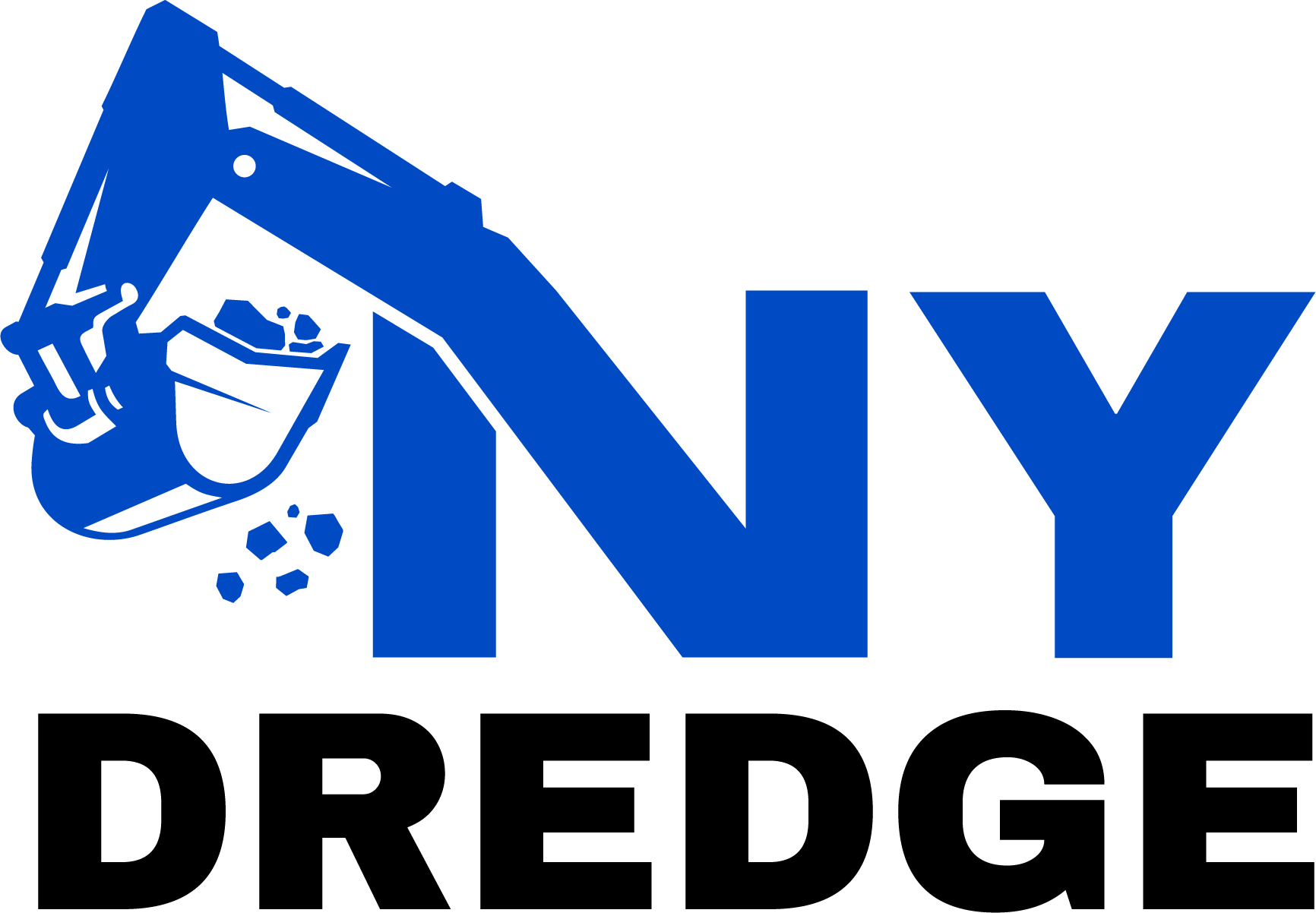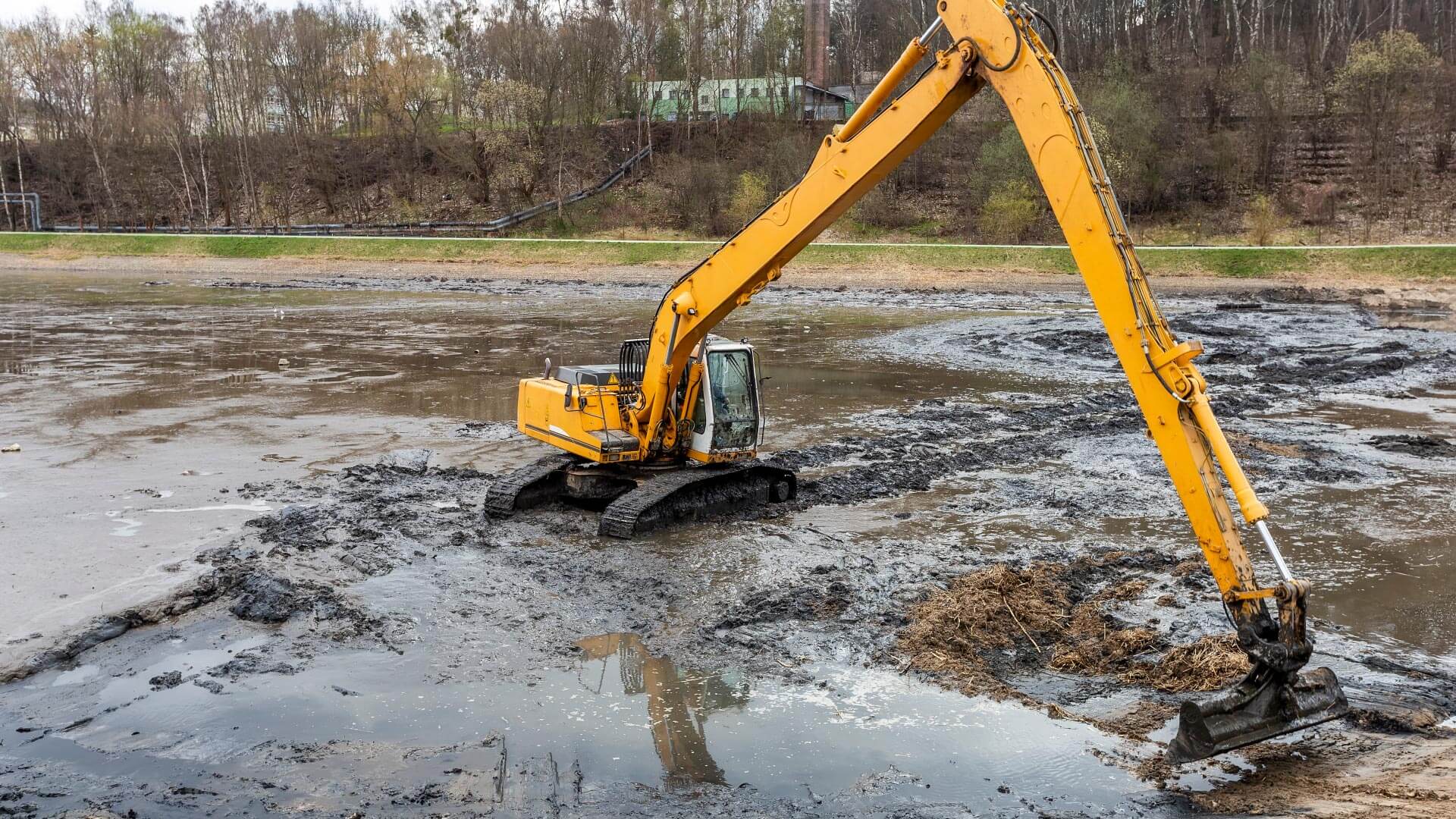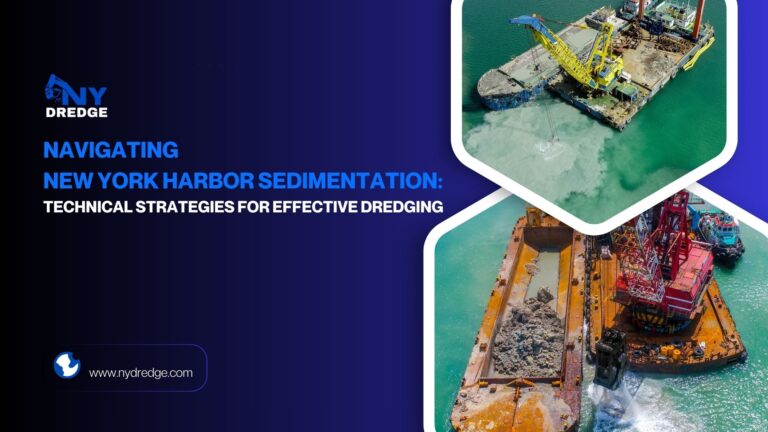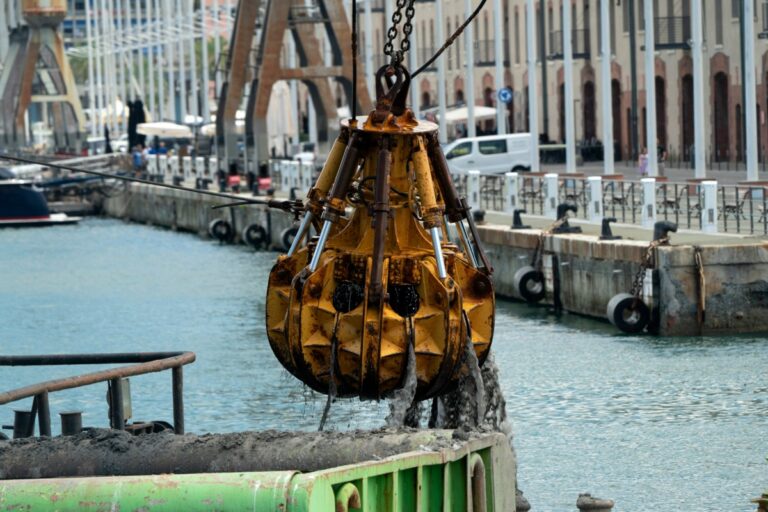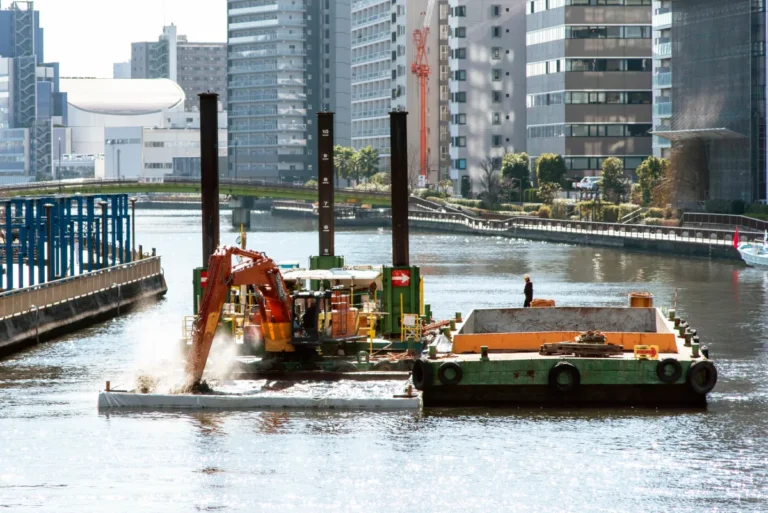Hydraulic dredging is a proven method for removing accumulated sediments in a wide range of industrial, municipal, and environmental applications. Unlike mechanical excavation, hydraulic dredging utilizes powerful pumps and slurry transport systems to move material with minimal surface disruption, allowing for efficient movement. Whether the goal is to maintain navigational depths, manage industrial waste ponds, or restore flood control basins, the success of any operation depends on the right hydraulic dredging equipment, planning, and execution. This guide provides a detailed overview of the systems, processes, and best practices involved in modern hydraulic dredging.
What Is Hydraulic Dredging? A Systems-Based View
Hydraulic dredging is a sediment removal method that utilizes high-powered pumps to transport a mixture of water and solids (known as a slurry) through pipelines. From a systems-engineering perspective, hydraulic dredging operates as an integrated network of mechanical, hydraulic, and fluid transport components, working together to excavate and move large volumes of material efficiently.
At the core of the system is a hydraulic dredge, typically equipped with a cutterhead or suction nozzle, slurry pump, and discharge pipeline. The cutterhead loosens submerged material, which is then mixed with water and pumped as slurry to a designated discharge area—often miles away. Supporting systems may include power units, booster stations, dewatering setups, and control modules for real-time monitoring and control.
Compared to mechanical dredging, which physically uses buckets or grabs to remove sediment from the water, hydraulic dredging is a continuous process. It is better suited for high-volume, flowable materials such as silt, sand, ash, and fine tailings. While mechanical dredging offers precision in compact or urban spaces, hydraulic dredging excels in open-water and large-scale sediment removal scenarios due to its speed and efficiency.
In the broader dredging landscape, hydraulic dredging plays a central role in maintaining navigational channels, restoring reservoirs, cleaning industrial ponds, and managing tailings in mining operations. Its ability to integrate with modular hydraulic dredging equipment and automation platforms makes it a preferred solution for scalable, low-turbidity sediment removal across multiple sectors.
The Core Components of a Hydraulic Dredge
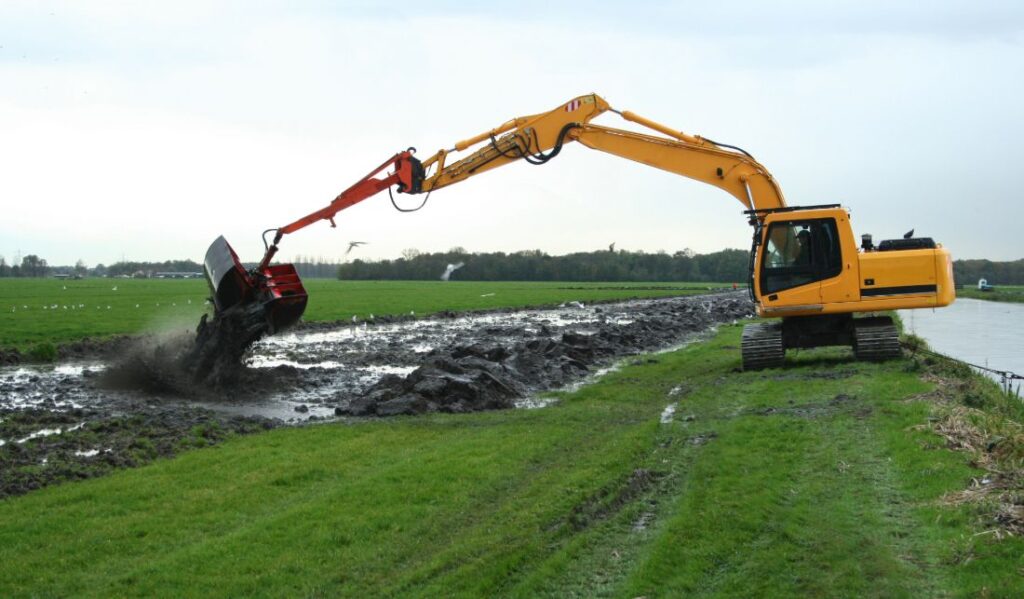
A hydraulic dredge is a coordinated system of components designed to excavate and transport sediment with precision and efficiency. Each component plays a specific role in enabling continuous hydraulic dredging operations, from material agitation to final discharge. Below is a breakdown of the main components and their functions:
Cutterhead or Suction Intake – Sediment Agitation and Mobilization
The cutterhead, or suction intake, is located at the front of the hydraulic dredge. It agitates and loosens compacted sediment on the waterbed, allowing it to mix with water and form a pumpable slurry. Cutterheads are typically used when dealing with compacted material like clay or consolidated sand, while plain suction intakes are sufficient for soft, free-flowing sediments. The choice of intake depends on the dredging application and the type of sediment.
Pump System – Slurry Transport
The pump is the core of the hydraulic dredging equipment, responsible for moving the slurry from the suction point through the pipeline to the discharge location. Dredge pumps are designed for high solids concentration and abrasion resistance. Common pump types include:
| Pump Type | Best For | Advantages |
| Centrifugal Dredge Pump | General-purpose slurry pumping | High flow rate, easy maintenance |
| Submersible Slurry Pump | Deep or submerged dredging | Eliminates the need for suction lift |
| Booster Pump Station | Long-distance transport | Maintains flow and pressure over the range |
Pump performance is critical to the overall efficiency of the hydraulic dredging operation.
Pipeline and Booster Stations – Maintaining Pressure Across Distances
Slurry is transported via discharge pipelines that can extend several kilometers. To maintain consistent flow and prevent pressure drops, booster stations are installed at intervals. These stations house additional pumps that re-pressurize the slurry flow, ensuring continuous transport, especially in long-distance or uphill pumping conditions.
Power and Control Systems – Electrical/Hydraulic Integration
Modern hydraulic dredging equipment integrates electric or diesel power units with control panels that regulate all major dredge functions. These systems manage engine speed, pump performance, swing winches, cutterhead rotation, and more. Advanced setups include real-time sensors, GPS positioning, and flow monitoring tools, enabling operators to control the dredging process with greater accuracy and responsiveness.
Support Equipment – Pontoons, Spuds, Winches, and GPS Units
To maintain stability and operational control, a hydraulic dredge includes essential support components:
- Floating pontoons support the main structure and pipelines.
- Spuds anchor the dredge in position during operation.
- Winches and cable systems manage lateral and longitudinal movement.
- GPS and telemetry units assist in navigation, precision cutting, and real-time progress tracking.
These components ensure safe, steady, and efficient hydraulic dredging in varying aquatic environments.
The Hydraulic Dredging Process: From Planning to Execution

A successful hydraulic dredging project follows a structured process from site evaluation to post-operation analysis. Each stage ensures operational efficiency, regulatory compliance, and the proper use of hydraulic dredging equipment. Below is a step-by-step breakdown of the process:
Site Assessment and Sediment Profiling
The first step is conducting a detailed assessment of the dredge site. This includes:
- Bathymetric surveys to map underwater topography
- Sediment sampling to determine material type (silt, sand, clay, or industrial waste)
- Environmental assessments to evaluate turbidity limits, aquatic life, and water quality regulations
- Access points and disposal options planning
This data guides equipment selection, project scope, and compliance strategy. For example, high-clay content may require a cutterhead hydraulic dredge, while sandy sediment may allow for plain suction.
Mobilization and Equipment Setup
Mobilization involves transporting and assembling the hydraulic dredging equipment at the project site. This includes:
- Positioning the dredge and anchoring spuds
- Installing a floating discharge pipeline and booster stations
- Setting up power units, telemetry, and control systems
- Conducting pre-dredge equipment checks and crew safety briefings
Setup time varies based on site access, pipeline length, and environmental constraints such as shallow water depth or proximity to sensitive habitats.
Dredging Operation and Slurry Transport
Once operational, the hydraulic dredge continuously removes and transports sediment as a water-solids slurry. Key variables during this phase include:
- Pump flow rate and pressure to match pipeline resistance
- Cutterhead or suction control based on sediment type and compactness
- Monitoring solids concentration to avoid over-dilution or pipeline blockages
- Turbidity controls, like silt curtains to reduce environmental impact
Real-time sensors and GPS guidance help operators maintain dredge path accuracy and optimize performance.
Dewatering and Sediment Disposal
At the discharge point, the slurry is processed for final disposal. Common methods include:
- Geotextile tubes for dewatering and containment
- Settling ponds for passive water separation
- Mechanical separators for high-throughput dewatering
- Direct placement if conditions allow
The method depends on factors such as sediment volume, disposal site capacity, water content, and regulatory requirements.
Demobilization and Post-Dredge Surveying
After reaching target depths and volumes, the equipment is disassembled and removed from the site. Final steps include:
- Post-dredge bathymetric surveys to confirm completion
- Turbidity and water quality checks
- Site restoration where required
- Reporting and compliance documentation
Demobilization planning should account for logistics, disposal site conditions, and local permit requirements.
Hydraulic Dredging Equipment: Modern Capabilities and Modular Flexibility
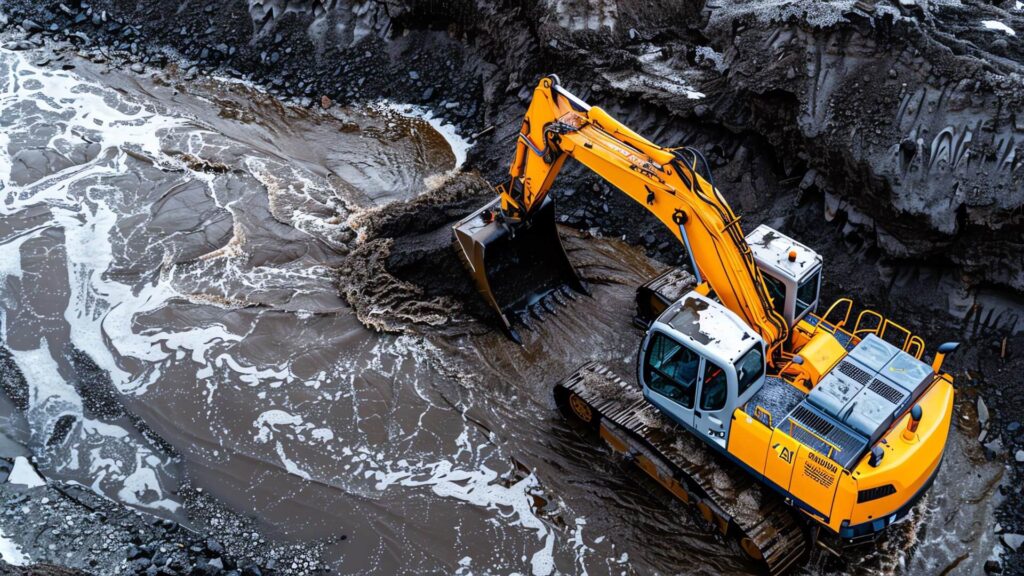
Advancements in hydraulic dredging equipment have significantly increased operational efficiency, precision, and adaptability across a wide range of dredging projects. Modern systems are designed to handle more material with less downtime, while offering better control over dredging parameters such as flow rate, depth, and solids concentration.
Automation and Real-Time Monitoring
Modern hydraulic dredges are equipped with onboard automation systems that monitor and adjust dredging operations in real time. These systems track key performance indicators such as:
- Pump speed and output pressure
- Slurry density and flow velocity
- Cutterhead torque and RPM
- Positional accuracy via GPS
Automated feedback loops reduce the risk of pump overload, optimize solids concentration, and help avoid pipeline blockages. This results in more consistent dredging output and improved fuel or energy efficiency.
Modular Equipment Design
Today’s hydraulic dredging systems feature modular components that can be easily customized or scaled for different project needs. These include:
- Interchangeable cutterheads for varying sediment types
- Adjustable spud lengths and anchor systems
- Skid-mounted, trailer-mounted, or barge-mounted configurations
- Plug-and-play control panels and telemetry modules
This modularity enables contractors to quickly adapt equipment for shallow ponds, confined industrial sites, or long-distance slurry transport projects.
Remote-Control Systems and Mobility Features
Remote-control capabilities allow operators to control the dredge from shore or a nearby vessel. Key functions such as dredge positioning, cutterhead control, and slurry pump adjustments can be managed through wireless or fiber-optic links. This enhances operator safety and reduces staffing requirements.
Additionally, trailer-mounted hydraulic dredging equipment provides high mobility for short-term or multi-site projects. These portable units are ideal for municipalities, utilities, and contractors who need rapid deployment with minimal infrastructure.
Flexible discharge piping, including HDPE hoses and modular float systems, allows for pipeline routing over water, land, or around obstacles without compromising flow integrity. This flexibility supports more efficient layout and discharge strategies for various site conditions.
Technical Factors That Impact Hydraulic Dredge Performance
The performance of a hydraulic dredge depends on several technical factors that directly affect project efficiency, operating costs, and equipment reliability. Proper evaluation and adjustment of these factors are essential to maximize the return on investment in hydraulic dredging equipment.
Material Type and Solids Content
Different sediment types present different challenges. Fine silt, loose sand, compacted clay, and industrial sludge each respond differently to hydraulic dredging. Denser or cohesive materials typically require a cutterhead for effective agitation and may reduce overall throughput.
The solids content—or percentage of solids within the slurry—impacts pump performance and fuel consumption. Higher solids content increases dredging efficiency but also raises the risk of pipeline blockage or pump wear if not properly balanced.
Distance to Discharge
Longer discharge distances increase the total system resistance, requiring higher pump head or additional booster stations. Every bend or elevation gain in the pipeline adds to friction loss, which can reduce flow rate and increase energy usage.
Projects with long discharge lines must be carefully engineered to size the pump and pipeline correctly, ensuring the hydraulic dredge maintains consistent output without pressure drops.
Water Depth and Wave Conditions
Water depth influences the type and configuration of the hydraulic dredging equipment. Shallow sites may restrict dredge movement and cutterhead operation, while deeper environments may require submersible pumps or longer suction arms.
Wave action and current velocity also affect positioning, spud stability, and dredge control. In rough conditions, automated position correction systems and mooring configurations help maintain alignment and avoid downtime.
Pump Capacity and Head Loss
Pump selection must consider flow rate, pressure capability, and expected head loss due to friction and elevation. Undersized pumps will struggle with high-resistance pipelines, while oversized pumps may consume excess fuel or damage the system through cavitation.
Monitoring actual vs. calculated head loss during operations helps maintain target production rates and avoid pump failures.
Pipeline Diameter and Booster Configuration
The diameter of the discharge pipeline influences flow velocity and pressure drop. Smaller diameters increase velocity but also lead to increased friction loss, requiring more pump power or boosters. Larger diameters reduce resistance but may require higher initial pressure to maintain flow.
Booster stations are strategically placed along the pipeline to maintain consistent pressure over long distances. Their proper placement and synchronization with the main pump are critical for continuous hydraulic dredging operations.
Environmental and Regulatory Considerations
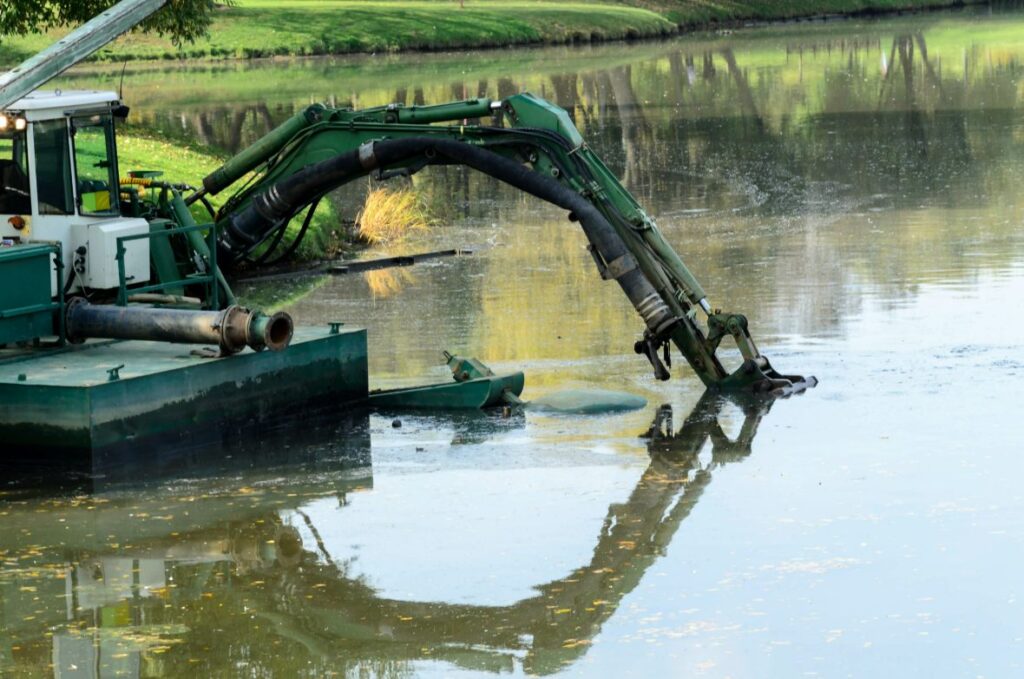
Hydraulic dredging must comply with stringent environmental regulations to minimize its ecological impact and protect the surrounding water quality. Government agencies and permitting authorities require detailed assessments, mitigation strategies, and monitoring plans before a hydraulic dredge can be deployed.
Alignment with Environmental Compliance
Compared to mechanical methods, hydraulic dredging offers lower turbidity levels and less disruption to the water column when properly controlled. Modern hydraulic dredging equipment incorporates real-time monitoring tools that track key parameters, including suspended solids, flow rates, and discharge concentrations. These systems help operators stay within regulatory limits while maintaining productivity.
Silt Curtains, Turbidity Control, and Wildlife Protection
To control sediment dispersion, silt curtains are commonly deployed around active dredging areas. These floating barriers reduce the spread of disturbed particles, keeping turbidity levels within compliance thresholds and protecting nearby aquatic habitats.
Additional mitigation measures may include:
- Flow rate modulation to prevent over-agitation
- Off-hour scheduling to avoid sensitive wildlife activity periods
- Acoustic barriers or exclusion zones to protect fish and marine mammals
These practices help ensure that hydraulic dredging operations do not interfere with spawning grounds, wetlands, or endangered species.
Permitting and Water Quality Monitoring
Securing dredging permits requires coordination with local, state, and federal agencies. Key regulatory bodies may include the U.S. Army Corps of Engineers, EPA, state environmental departments, and local water authorities.
Permit applications typically require:
- Bathymetric surveys
- Sediment testing (contaminants, grain size)
- Environmental impact assessments
- Dredging and disposal plans
Once approved, projects must implement water quality monitoring protocols throughout the dredging operation. This includes turbidity sampling, dissolved oxygen checks, and periodic reporting to authorities. Failure to comply with permit conditions can result in fines, shutdowns, or remediation orders.
Industry Applications That Rely on Hydraulic Dredging
Hydraulic dredging plays a crucial role in various sectors where sediment buildup affects operations, safety, or environmental compliance. Below are practical applications where the use of a hydraulic dredge and associated hydraulic dredging equipment is essential for maintaining system performance and meeting regulatory standards.
Navigational Channel Maintenance
Ports, harbors, rivers, and inland waterways require consistent dredging to maintain navigable depths. Hydraulic dredging is preferred for removing soft sediments, such as silt and sand, efficiently and with minimal disruption to marine traffic. Continuous operations with real-time monitoring enable the management of depth control while staying within environmental thresholds.
Ash Pond and Tailings Pond Management
Power plants and mining operations utilize hydraulic dredging equipment to manage waste byproducts, including coal ash and mineral tailings. These ponds require routine dredging to maintain capacity, prevent overflows, and comply with environmental containment regulations. Hydraulic dredging enables controlled removal and transport of high-solids slurry to disposal or recycling areas.
Flood Control Basin Restoration
Stormwater retention basins, detention ponds, and flood control reservoirs often accumulate sediment over time, which reduces water storage and increases flood risk. A hydraulic dredge can remove accumulated debris without draining the basin, restoring functionality while maintaining continuous water management.
Agricultural Reservoir Cleaning
Irrigation reservoirs and farm ponds are prone to sedimentation from runoff, which reduces their water-holding capacity and impacts crop cycles. Hydraulic dredging provides an effective method for removing this material while preserving infrastructure, such as intake gates and pumps. Modular equipment enables access to remote or shallow sites, which are common in agricultural areas.
Industrial Intake Maintenance
Manufacturing plants, power stations, and water treatment facilities depend on clear intake channels to operate efficiently. Sediment buildup can restrict flow, damage pumps, and increase maintenance costs. Hydraulic dredging enables the precise removal of material near intake structures, minimizing downtime and protecting sensitive equipment.
Final Thoughts: The Future of Hydraulic Dredging in Infrastructure and Resource Management
As infrastructure demands grow and environmental regulations become stricter, hydraulic dredging remains a vital solution for efficient sediment management across various sectors. By understanding its components, technical variables, and operational best practices, project teams can optimize outcomes while staying compliant. Whether you’re planning a large-scale channel deepening project or a localized pond restoration, the right equipment and expertise make all the difference. To explore equipment options or consult with hydraulic dredging specialists, visit NY Dredge and get support tailored to your project requirements.
